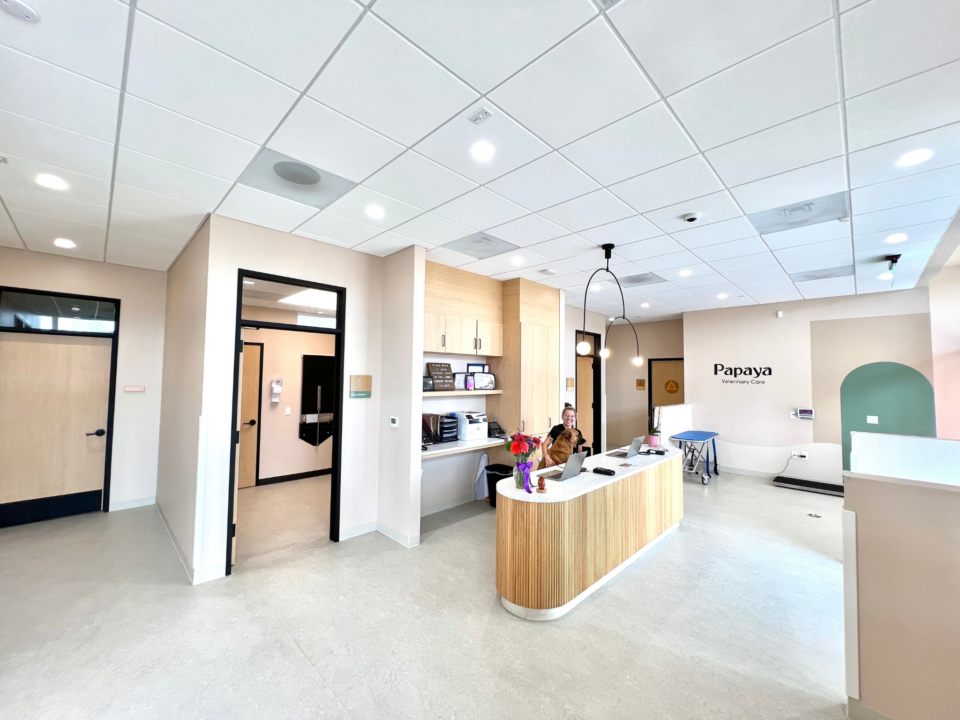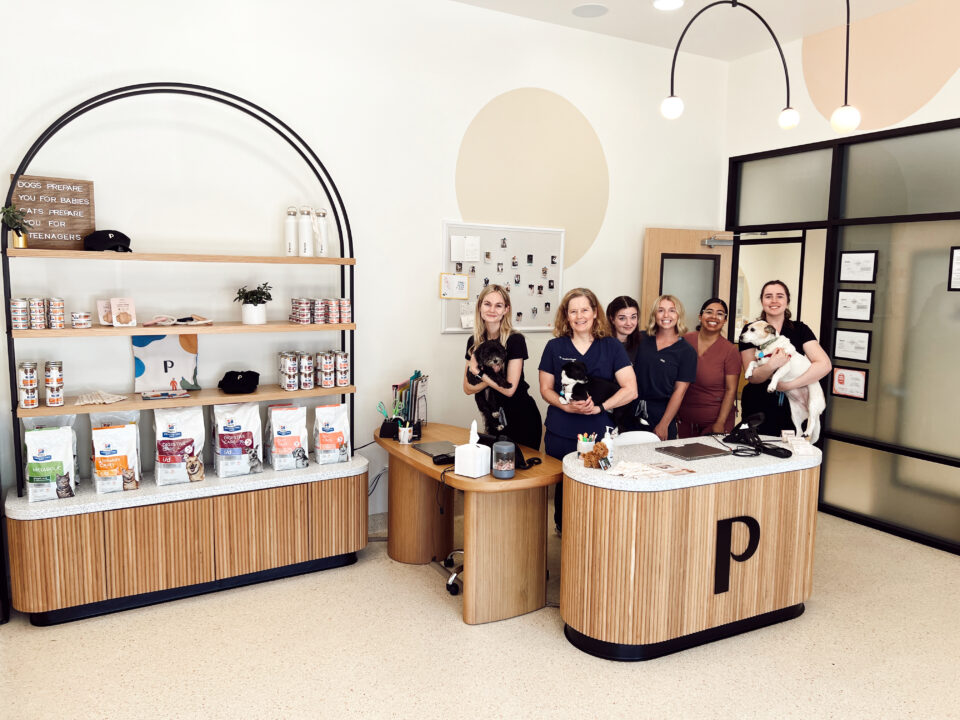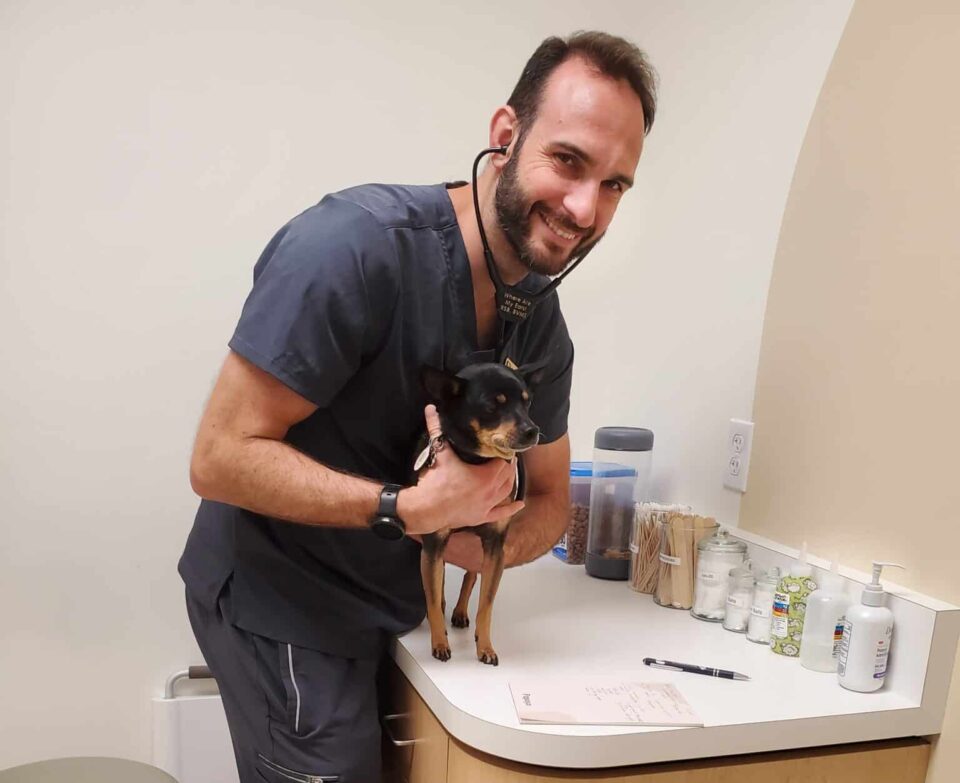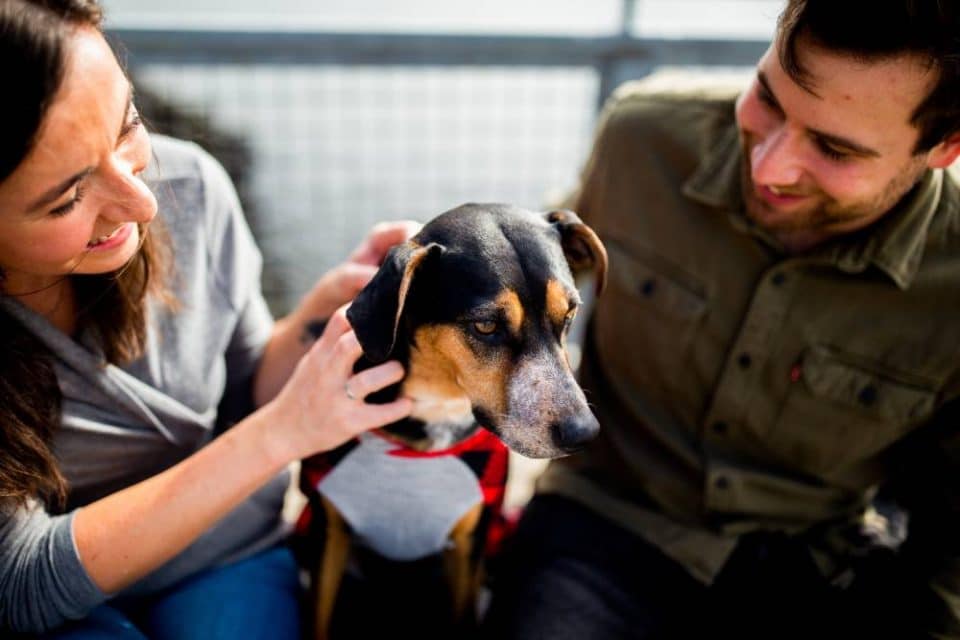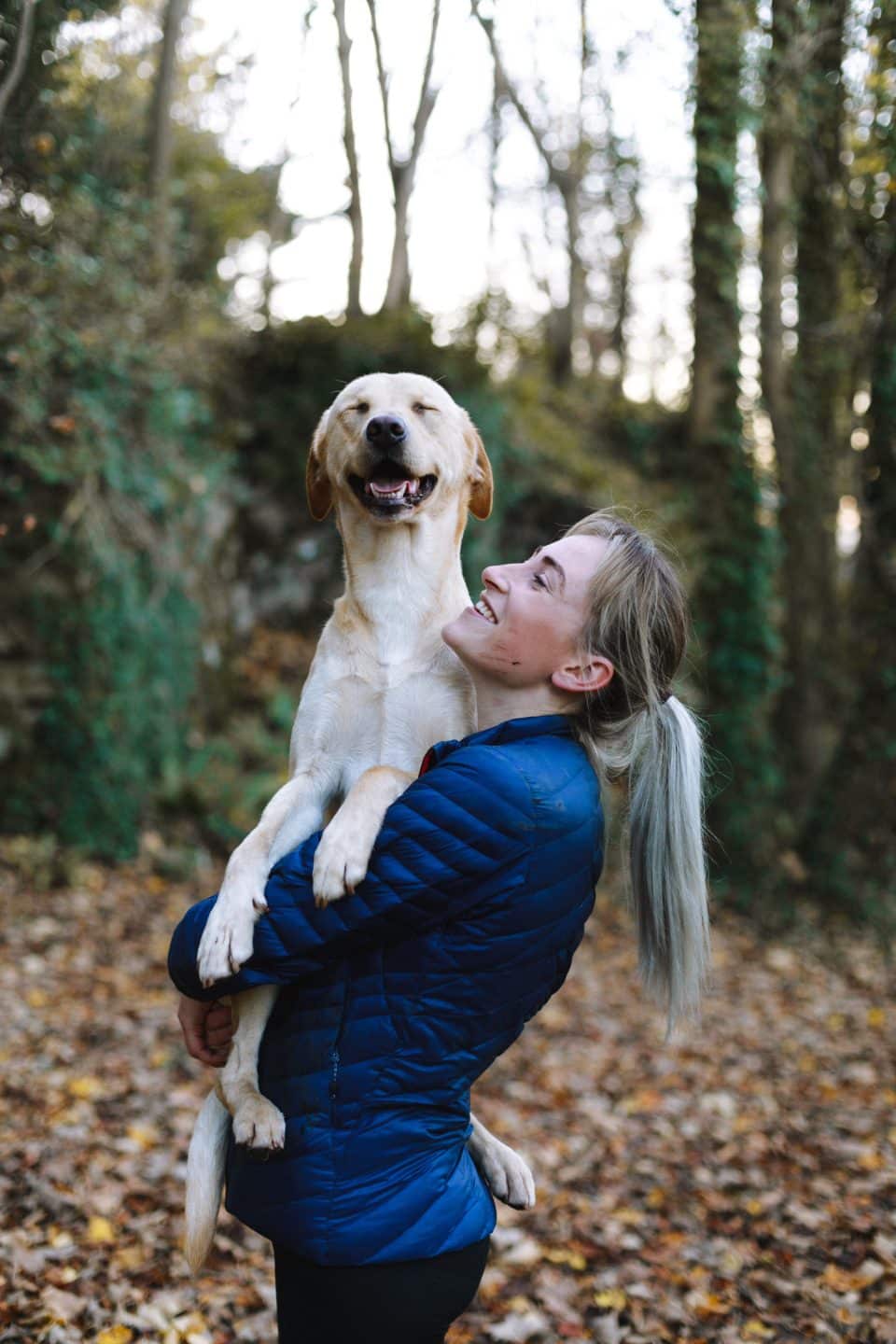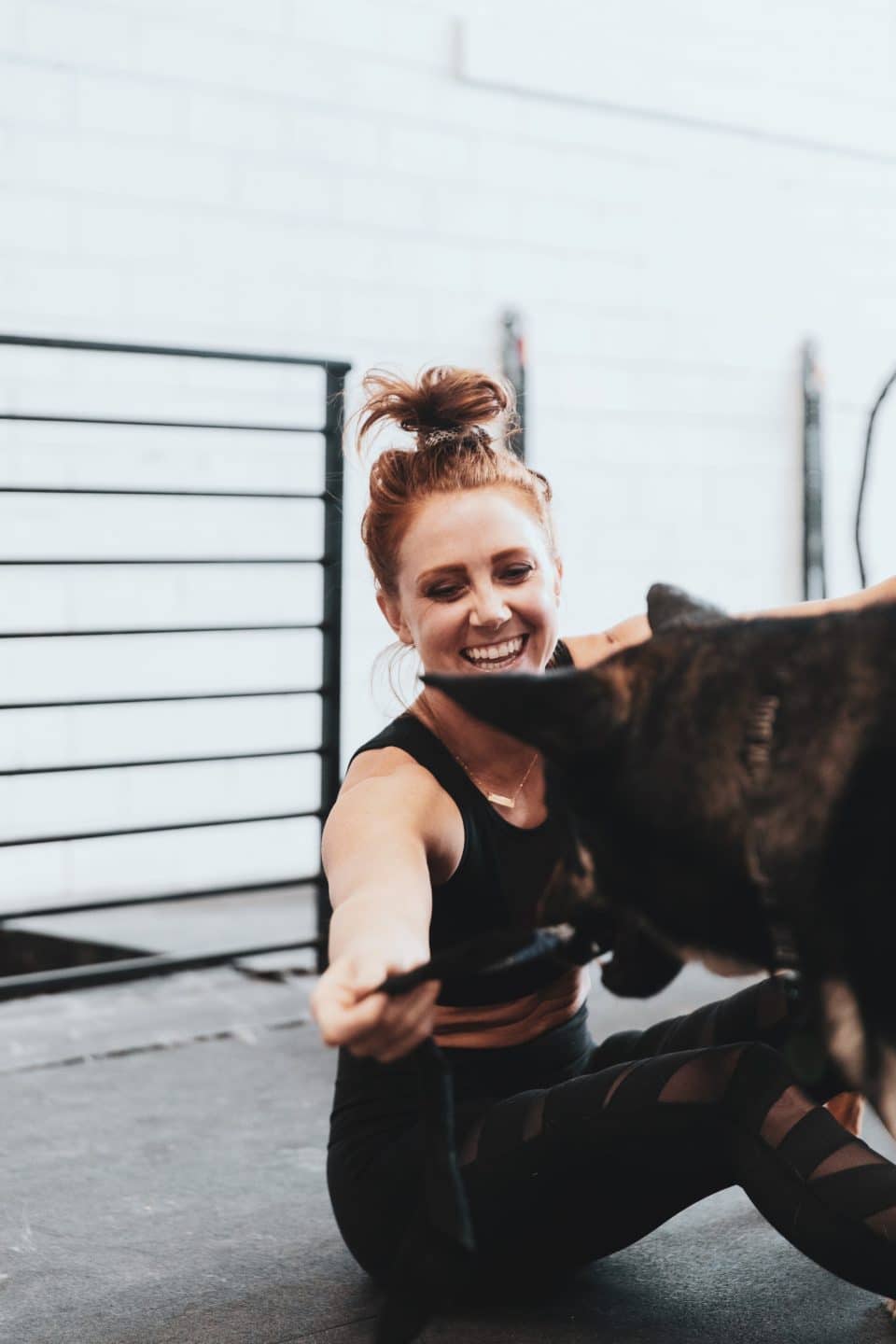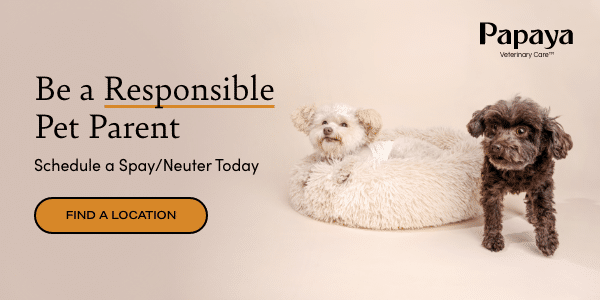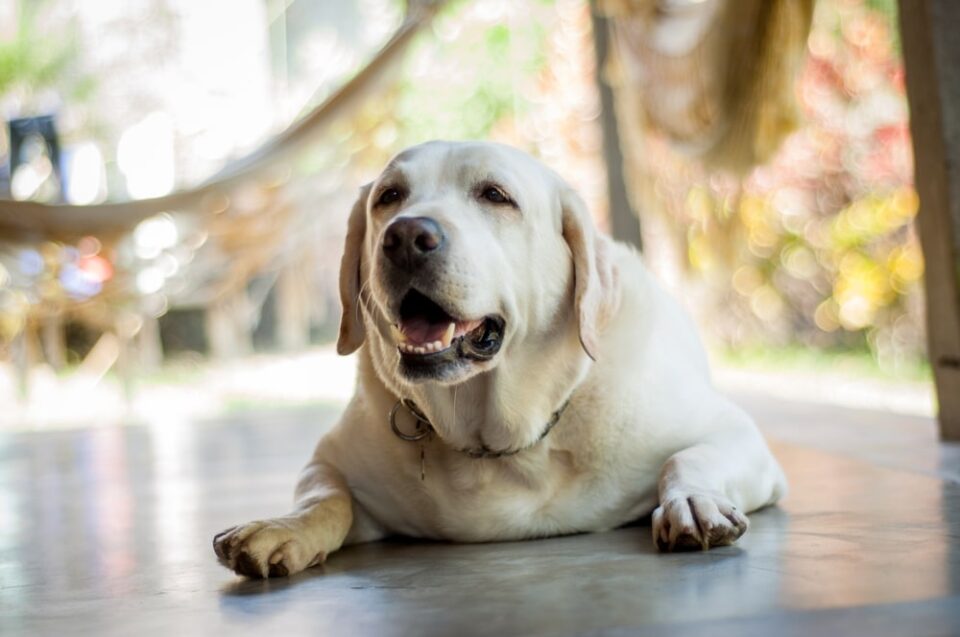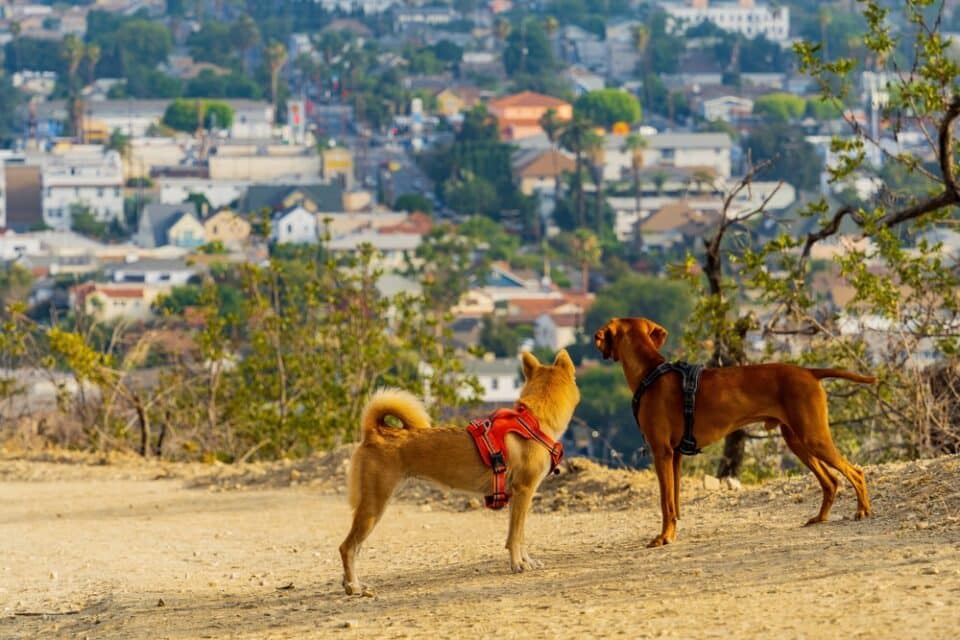Pet Care
10 min read
Dog Cancer Prevention Tips
Published on Jul 5, 2023
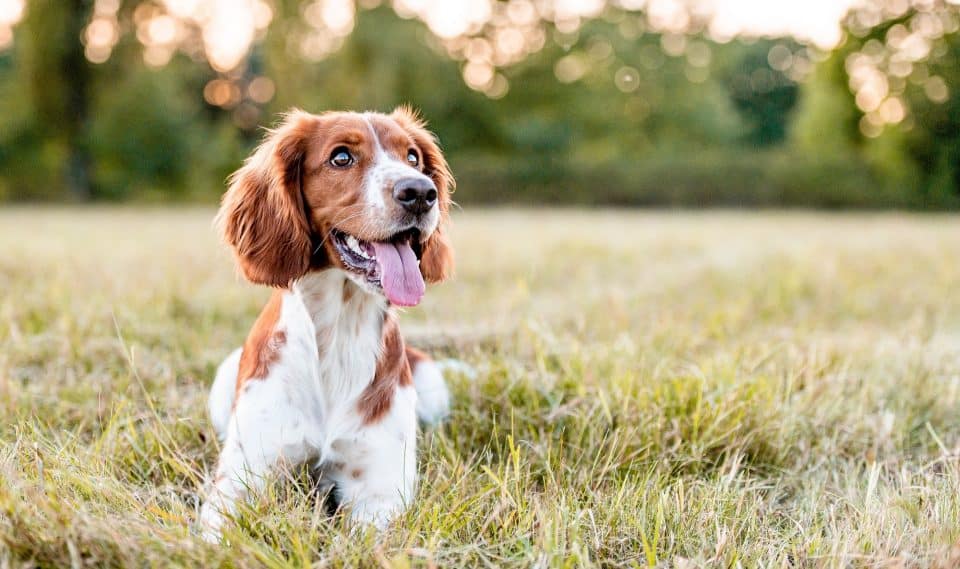
When your puppy is bouncing off the walls and gleefully chasing its tail in circles (how is this attached to me?), it’s difficult to think that they may one day be debilitated by canine cancer.
And yet, dog cancer is more prevalent than you might think. The American Kennel Club reports that one in four dogs is diagnosed with the disease at some point in their lives, while the Veterinary Cancer Society asserts it’s the number one cause of death in elderly dogs.
Fortunately, there are dozens of ways to safeguard your dog’s health and reduce its risk of cancer, giving your golden retriver the joy of wellness and you more time by their side. Keep reading to learn how to prevent cancer in dogs.
1. Weigh the Spay/Neutering Question with Your Trusted Veterinarian
The decision to spay or neuter your dog may seem like a no-brainer if you don’t plan on breeding them (among other reasons). It’s also generally deemed the responsible thing for a pet parent to do, particularly when it comes to male dogs who might veer toward the feisty side.
But in the last several years, a growing body of research has demonstrated that the decision to spay or neuter your dog is more nuanced than we once believed:
In A 2013 study performed by veterinarians at the University of California, Davis discovered that neutered Golden Retrievers were at a higher risk of three types of cancer—lymphoma, mast cell tumors, and hemangiosarcoma—than their non-neutered counterparts.
More recently, a 2020 study discovered that neutered Golden Retrievers, German Shepherds, and Labrador Retrievers showcased an increased risk of cancer. The same went for neutered male Cocker Spaniels and spayed female Boston terriers.
True, some breeds, such as Golden Retrievers, have a higher rate of cancer, period—a topic we’ll delve into more in a bit. Also true: Spaying and neutering your dog may curb their risk of breast cancer and stamp out the chance of uterine, ovarian, and testicular cancer risk altogether.
Nonetheless, reviewing your dog’s breed and lifestyle with your veterinarian before heading blindly to the knife is central to their overall health and longevity.
2. Minimize Sun Exposure
Whether or not your home has fur balls dancing in its corners, it may be difficult to imagine that a creature covered in hair—mostly or entirely—could be prone to skin cancer.
Alas, skin cancer is widespread in dogs and makes up for roughly one-fifth of all canine cancer diagnoses. Hairless breeds, like Chinese Crested Dogs and American Hairless Terriers, are also at an increased risk. And while sun exposure isn’t the only factor that contributes to the disease’s onset, reducing the time your dog spends under direct sunlight is one of the most effective ways to prevent it:
- Squamous cell carcinoma
- Malignant melanoma
- Melanocytomas
- Mast cell tumors
- Hemangiomas
Our advice? Use a dog-friendly sunscreen that eschews zinc oxide and PABA—two ingredients that can be toxic to your dog if they’re accidentally ingested. (Read: Your dog gasps and licks its fur.) You can also invest in sun protective gear, preferably with an SPF of 40 or higher.
No matter what you choose, play with your dog in places that offer ample shade and save a game of catch for the cooler parts of the day—ideally, before noon and after 4 pm.
3. Help Your Dog Keep Their Weight in Check
Your dog’s giant, adorable eyes might be irresistible when they come begging at the table, but it’s vital to keep your dog at a healthy weight: According to Veterinary Practice News, obesity and inadequate physical activity may account for as much as 30% of cancers in dogs. It also ups their chances of joint disease and may exacerbate health conditions like diabetes.
In addition to sticking to your guns when you’re having a human dinner (or placing your dog in another room when mealtime with your fam rolls around), prioritize the following:
- A boatload of exercise – Hiking, walking, running, swimming, dog sledding, cycling, tossing a Frisbee back and forth, surfing with your dog on the nose of your board—all can do wonders for your dog’s health. The amount of exercise your dog requires depends on their breed, health status, and age, but typically dogs need 30 minutes to two hours of activity per day.
At a loss of what to do when the weather turns grim? Even games of tug of war and treks up and down the stairs can help your dog “get in their steps” (without a FitBit, of course). - Quality nutrition – Some dogs devour whatever food you put in front of them—and even what you don’t. Hooray for a healthy appetite, but nutrition is as crucial to your dog’s well-being as exercise, love, and hydration. Ensure what you put in their bowls is nutrient-rich with an optimal ratio of protein, fat, and carbohydrates. (This varies by breed.) Search for superior, AAFCO-approved brands and food that feature different types of fatty acid which help combat cancer-triggering free radicals. Happen to cook homemade meals for your pup? Run your recipes by your veterinarian.
Additionally, some “two-legged” foods and herbs, like turkey tail mushrooms, carrots, rosemary, and dill, may decrease your dog’s vulnerability to cancer. Other human foods to pop into your dog’s bowl include eats brimming with antioxidants, such as cantaloupe, cherry tomatoes, berries, and bell peppers.
A set eating schedule – Letting your dog graze all day may amplify its risk of obesity. Set aside windows of time specifically for eating.
4. Dodge Secondhand Smoke
We all know the human hazards of secondhand smoke—and the same applies to dogs. Nasal cancer and lung cancer are more widespread in dogs that are exposed to smoke; the former may be particularly true of dogs with long snouts, like Labrador Retrievers and Dachshunds.
5. Help Your Dog Evade Contact with Potential Toxins
Herbicides, pesticides, and insecticides have all been linked to a greater risk of canine cancer. Specifically, dogs are sensitive to 2, 4 dichlorophenoxyacetic acid, a common ingredient in herbicides that have been connected to transitional cell cancer and malignant lymphoma.
Keep in mind that solvents and paints contain chemicals that could be deleterious to your dog’s health—and that puppies especially have no problem with getting into sticky stuff.
6. Stay On Top of Wellness Exams
The earlier cancer is detected, the higher your chances of finding a cancer treatment route that could ease your dog’s ails, reduce the cancer risk, and promote recovery.
After your puppy has received the vaccines they need—including those for rabies—annual head-to-tail examinations, complete with blood and urine tests, are essential. Older dogs, or those seven and older, should see their veterinarian a minimum of twice a year. If you spot changes in your dog’s health or behavior, however, schedule an appointment ASAP.
This brings us to our next point.
7. Be On the Lookout for Symptoms
Your female or male dog communicates with you in countless ways, but the one thing it cannot do is articulate where they’re hurting—at least not in words. Gaining an awareness of the most common cancer symptoms in dogs is one of the first steps towards getting your dog prompt care.
Stay on alert for the following signs:
- Tummy issues and eating habits – An occasional bout of gastrointestinal problems are par for the course. Ongoing changes in your dog’s bowel movements, though, should be noted and relayed to your veterinarian. Vomiting, diarrhea, and stomach ulcers, for instance, might be indicative of a mast cell tumors. (The emphasis is on might here—we’re talking worst-case scenario.) If your dog’s usually robust appetite dwindles, it may be cause for concern, too: Lymphoma and bone cancer (or osteosarcoma) can result in a decreased desire to eat.
- Difficulty breathing and coughing – Labored breathing might be a non-issue after a vigorous workout or on an especially hot day. But if your dog has difficulty breathing and other signs of respiratory issues for some time, call your veterinarian. Certain cancers, including lung cancer, can result in troubled breathing.
- Limping – Bone cancer is the most rampant type of cancer in dogs. This aggressive form of cancer may manifest as lameness and swelling. Your dog might also exhibit signs of pain when they’re walking or be reluctant to walk at all.
- Wounds that refuse to heal – Skin lesions that don’t seem to improve may be nothing, or they may be a sign of mast cell tumors—a forceful form of cancer that affects inflammatory cells. While inflammatory cells are located throughout the body, tumors tend to migrate toward those near the skin’s surface, as well as the mouth, nose, and ears. If your dog has a lesion, monitor it carefully, and seek veterinary attention if it doesn’t heal.
- Swollen lymph nodes – Like all mammals, pet dogs have lymph nodes—glands that play a fundamental role in the immune system. When a disease such as a lymphoma or an infection is present, more lymphocytes are generated to combat the invading pathogen. This can result in a build-up of lymphatic fluid in these glands; in a dog, this may manifest in enlarged lymph nodes underneath the chin or on either side of the neck; in the groin; on the chest; or behind their knees.
This certainly isn’t an exhaustive list of cancer symptoms. You should also keep an eye out for neurological changes (such as difficulty urinating), unintentional or inexplicable weight loss, dark sores, weakness and fatigue, disinterest in exercise, and sudden fainting. The latter may be a sign of hemangiosarcoma, which impacts the heart, spleen, skin, and liver, and may lead to severe internal bleeding.
Above all, you know your dog well, and anything that seems concerning or off warrants a visit to your veterinarian.
8. Select a Reputable Breeder
You might be in the process of eyeing a darling puppy as you read this and have your eyes and heart set on a particular breed. If so, make sure you choose a responsible, registered breeder. An ethical breeder will test their stock for common cancers and perform health screenings on issues specific to the dog’s breed.
The Humane Society of the United States also recommends searching for these qualities when picking a breeder:
- A clean, safe environment
- Solid relationships with local veterinarians
- Breeds only one type of dog—and intermittently
Responsible breeders tend to require in-person meetings—and multiple ones at that—to guarantee the puppy you’ve chosen is a good fit for them and their adoptive parent(s). We’d hazard to say you feel the same.
9. Know Your Dog’s Breed and Their Vulnerability to Certain Cancers
Will knowing your dog’s breed stop them from getting cancer? No, not necessarily, but having an awareness of which dogs are more susceptible to cancer (and distinct types of cancer in dogs) may prompt you to take additional precautions that are unique to your dog’s breed.
For example, large and giant breeds have a genetic predisposition to developing bone cancer, namely:
- Golden Retrievers
- Scottish Deerhounds
- Irish Setters
- Great Danes
Rapid growth also places dogs at a higher risk for bone cancer, and male dogs have a 20% to 50% greater chance of being diagnosed with the disease than females. If you’re searching specifically for how to prevent bone cancer in dogs, giving your puppy food tailored to his or her age may help prevent them from growing too quickly and cut down the cancer risk.
Meanwhile, splenic cancer is also more ubiquitous in larger breeds, including the Boxer, Golden Retriever, German Shepherd, Standard Poodle, Flat-coated Retriever, and Bernese Mountain Dog.
Wondering how to prevent spleen cancer in pet dogs inside and outside of these breeds? Follow the recommendations listed above but also schedule an appointment with your veterinarian if your dog develops pale gums, a swollen abdomen, and cold limbs.
Lastly, urban myth suggests that purebreds are more susceptible to cancer in general. Cancer can afflict any dog of any age, but mixed breeds actually have a greater tendency toward cancer. This underscores the importance of treating all dogs with exceptional care.
Prioritize Your Dog’s Wellness with Papaya Pet Veterinary Care
Cancer in dogs may be pervasive, but staying current on your pet’s wellness appointments helps ensure you’re kept apprised of their health status, especially as they move into their later years.
We also prioritize a low-stress approach at our pet-first animal hospital for your dog’s appointment. The result? A healthier, happier dog—and the blissful barks that come with it.
Find the ultimate in pet care with Papaya Pet, where we can also answer any questions like what causes cancer in cats, and rest assured your dog will be given the attention they deserve.
Sources:
- American Kennel Club. Cancer in senior dogs: signs and symptoms to watch for. https://www.akc.org/expert-advice/health/cancer-senior-dogs-signs-symptoms-to-watch-for/
- Vet Help Direct. Does neutering dogs cause cancer? https://vethelpdirect.com/vetblog/2020/10/10/does-neutering-dogs-cause-cancer/
- Merck Manual Veterinary Manual. Reducing the risk of cancer–specific pet topics. https://www.merckvetmanual.com/special-pet-topics/cancer-and-tumors/reducing-the-risk-of-cancer
- Veterinarians.org. A pet owner’s guide to skin cancer in dogs: causes, symptoms, and treatment. https://www.veterinarians.org/skin-cancer-in-dogs/
- Veterinarians.org. How to prevent cancer in dogs: 5 ways to help your dog. https://www.veterinarians.org/how-to-prevent-cancer-in-dogs/
- The Spruce Pets. Skin cancer in dogs: symptoms, treatment and prevention. https://www.thesprucepets.com/skin-cancer-in-dogs-4628142
- American Kennel Club. Do dogs need sunscreen? What to know about uv exposure in pets. https://www.akc.org/expert-advice/health/do-dogs-need-sunscreen/
- Dogster. Let’s talk dog exercise—-how much exercise does a dog need every day? https://www.dogster.com/dog-health-care/dog-exercise-how-much-exercise-does-a-dog-need-every-day
- American Kennel Club. How to help your dog avoid cancer. https://www.akc.org/expert-advice/health/how-to-help-your-dog-avoid-cancer/
- Fetch by WebMD. How often should your pet see a veterinarian? https://www.webmd.com/pets/features/your-pet-veterinarian
- PetMD. 10 signs of cancer in dogs. https://www.petmd.com/dog/care/10-signs-cancer-dogs
- The Humane Society of the United States. Find a responsible dog breeder. https://www.humanesociety.org/resources/how-find-responsible-dog-breeder
- The Spruce Pet. Swollen lymph nodes in dogs. https://www.thesprucepets.com/swollen-lymph-nodes-in-dogs-5101171
- PetMD. What to know about bone cancer in dogs. https://www.webmd.com/pets/dogs/what-to-know-bone-cancer-dogs
- PedMD. Spleen cancer in dogs. https://www.petmd.com/dog/conditions/cancer/spleen-cancer-dogs#recoveryandmanagement

